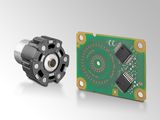- Login
- LOGIN-AREA
- Aftermarket Club
- Deutsch
750 millionth position sensor with CIPOS® technology sold
- Inductive position sensors by HELLA provide more safety while driving
- Position sensors with CIPOS® technology are resistant against extreme temperatures, vibrations and other adversities
- CIPOS® technology will also be a crucial component of electric mobility and autonomous driving in the future
In the late 90's, HELLA developed the CIPOS® technology, which is now implemented worldwide in countless fields of application including safety-relevant applications compliant with requirements up to ASIL D. For example, the technology is implemented in electronic pedal sensors, steering, vehicle level, and motor position sensors. And even actuators for turbochargers, throttle valves, radiator grille switches or electric valves use this technology. What makes it special: CIPOS® enables position measurement as absolute values. This is contactless based on an inductive method. Compared to mechanical sensors (potentiometer), these contactless sensors do not wear off. Furthermore, CIPOS® technology enables the transferring of measured values to the control unit. For the purpose of both digital and analog signal processing and transmission, HELLA succeeded in developing diverse ASICs (Application Specific Integrated Circuits), commonly called chips, which make up the main component of every CIPOS® sensor. Analog and PWM signals and also digital ones such as SENT, SPC, PSI5 and SPI are implemented as interfaces for transmission.
An additional advantage of CIPOS® sensors: They are resistant against vibrations, humidity, contamination and extreme temperatures from minus 40°C to over plus 170°C. Car manufacturers are following strict downsizing strategies and are reducing e.g. cylinder volumes in order to lower energy consumption. "This also means that motor space is becoming narrower and hotter. It must therefore be possible to accommodate sensors for narrower spaces where they have to function under increasing temperatures reliably", says Christoph Söhnchen.
The CIPOS® technology will continue to be a key component for electric mobility and autonomous driving. Electric vehicles feature brushless engines with strong performance and, therefore, greater currents. The CIPOS® technology, which works inductively in the MHz area, operates without a permanent magnet and, as a result of its inherent nature, is not affected by the magnetic fields created by the motor currents.
An important prerequisite for autonomous driving is the further development of X-by-wire systems. Normally, the steering motions or operations of the brake pedal are transmitted mechanically or hydraulically. The X-by-wire systems however transmit these electronically, thus requiring more robust and exact position sensors with CIPOS® technology in the future.
Company Spokesman
Rixbecker Str. 75
59552 Lippstadt, Germany
Tel.: +49 2941 38-7545
Fax: +49 2941 38-477545
Markus.Richter@hella.com


